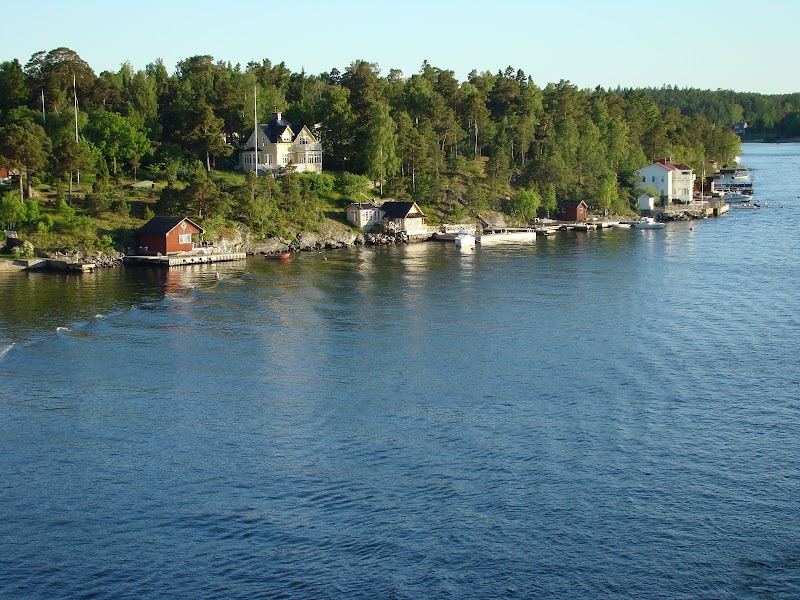
Running Through The Heart Of Scandinavia: Stockholm Marathon Experience
The Stockholm Marathon offers a thrilling blend of urban streets and natural scenery, winding through historic neighborhoods and waterfronts. This guide helps runners prepare for varying terrain, unexpected weather, and the city’s vibrant race day atmosphere.
Stay Hydrated Throughout the Course
Water stations appear roughly every 5 km, but carry your own hydration option to maintain steady intake, especially on warmer days.
Choose Versatile Running Shoes
A pair with good cushioning and support will help handle asphalt, cobblestones, and wooden bridges comfortably.
Pace Yourself Through Djurgården’s Trails
The softer surfaces and slight elevation in the park demand conscious pacing to avoid premature fatigue.
Prepare for Weather Variability
Early mornings can be cool and damp, while midday sun may bring warmth; layered breathable clothing is recommended.
Running Through The Heart Of Scandinavia: Stockholm Marathon Experience
The Stockholm Marathon invites runners to engage with a course that threads through the city’s historic streets and serene waterfronts, delivering a unique blend of urban and natural adventure. Covering the standard 42.195 kilometers, it offers a route that is mostly flat but stretches over varied terrain—from smooth asphalt in the city center to cobblestone patches and wooden bridges that require keen attention. The elevation gain is modest, hovering around 150 meters, but those subtle rises offer just enough challenge to keep the legs alert without overwhelming.
The race begins in the early morning when Stockholm’s air is crisp and the city still holds a gentle hush. As you run, the waters of Lake Mälaren dare you to quicken your pace beside its edges, while the archipelago’s distant outlines anchor the skyline, steady and patient. The marathon winds through iconic neighborhoods like Södermalm, where urban energy bristles, and the Old Town (Gamla Stan), where centuries of cobbled streets curve tightly beneath runners' feet.
While the marathon route is laid out for speed and efficiency, don’t miss the sensory details: the whisper of early spring leaves in the parks, the playful splash of breeze off the Baltic Sea, and the cheering crowds waving flags and offering encouragement at every turn. Stockholm treats this marathon as a celebration, not just a race—festive banners and local food stalls liven up the start and finish zones.
Preparation is critical here. The Nordic climate means weather can shift suddenly. Hydration points are well-distributed, but carrying your own small water bottle or hydration pack ensures consistent access to fluids, important on days when a warm sun climbs early. Footwear choice matters; a pair of well-cushioned, responsive running shoes will help navigate the varied surfaces without strain.
Timing your stride around the city’s landmarks adds a strategic element. The final kilometers push through Djurgården, a lush island park where nature presses close, trees stretch like watchful guardians, and the trail briefly softens into dirt paths. It's a moment to recalibrate, to steady your pace amid the hum of both city and forest.
The Stockholm Marathon is more than a race—it’s an encounter with a city fiercely alive and natural forces quietly insistent. Whether you’re a seasoned marathoner chasing a personal best or a casual runner savoring the adventure, this event offers a clear path to engage deeply with Stockholm’s spirit and landscape. Expect a challenge that respects neither rush nor ease but demands a balanced partnership between runner and environment.
Nearby Trips
All Adventures
Boat Charters
Water Activities
Adventures near Stockholm, Sweden
Discover the unique and memorable adventures that make Stockholm, Sweden special.
Frequently Asked Questions
How hilly is the Stockholm Marathon course?
The course features a modest elevation gain of approximately 150 meters, mostly gentle rises rather than steep hills, requiring endurance but no specialized hill training.
Are there any unique landmarks along the route?
Yes, runners pass through historic Gamla Stan with its narrow cobbled streets and cross wooden bridges in Djurgården that showcase both urban and natural settings.
What is the typical weather like on race day?
Early mornings are usually cool and crisp, but temperatures can rise quickly; rain is possible especially in spring, so be prepared for changing conditions.
Is the marathon suitable for first-timers?
While beginner-friendly in terms of terrain, the full marathon distance is always a challenge; good training and preparation are essential to complete the race comfortably.
What wildlife might be seen along parts of the course?
In the Djurgården park section, you may spot urban birds like magpies and sometimes squirrels darting close to the trails, offering small moments of nature within the city.
Are there refreshment stations throughout the marathon?
Yes, water and energy stations are spaced roughly every five kilometers, staffed by volunteers eager to keep runners fueled and hydrated.
Recommended Gear
Cushioned Running Shoes
Protect feet from varying surfaces and reduce impact on joints, ensuring comfort over 42 kilometers.
Lightweight Hydration Pack or Belt
Essential for maintaining optimal hydration in unpredictable or warming weather.
Breathable Layered Clothing
Allows adjustment to shifting temperatures, preventing overheating or chilling.
Running Cap or Visor
Helps shield from sun glare and heat during brighter sections of the race.
Local Insights
Hidden Gems
- "Run through the less crowded residential streets of Södermalm for a glimpse of Stockholm’s street art and local atmosphere."
- "The wooden bridge at Djurgården is a unique architectural feature seldom highlighted but offers a memorable transition from city to park."
Wildlife
- "Seagulls patrol the waterfront sections assertively, while songbirds inhabit tree-lined parks, lending natural soundtrack moments to the race."
History
"The marathon route highlights Stockholm’s centuries-old history, passing through neighborhoods that grew from medieval trading hubs to modern cultural centers."
